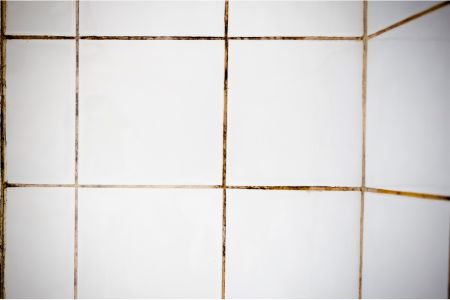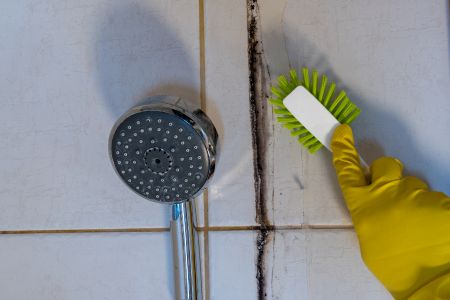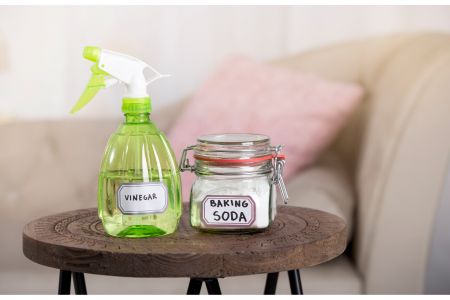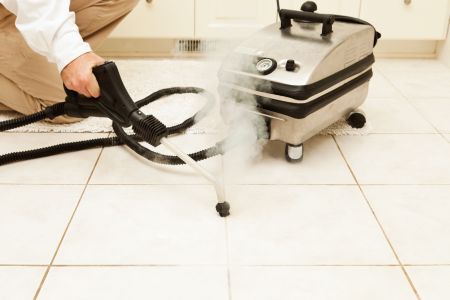Table of Contents
From Dingy to Dazzling: Grout Cleaning Made Simple!

Have you ever noticed how the spaces between your tiles, called grout, can sometimes look a little… well, dirty?
Maybe they started bright and clean, but they’ve taken on a different shade over time. It’s like when your favorite white shirt slowly becomes not-so-white. But, just like that shirt, there’s hope for your grout!
Let’s face it: our homes are meant to be lived in. Spills happen, mud gets tracked in, and water sometimes splashes around. And your grout? It quietly absorbs it all. No wonder it can look a bit tired after a while.
But here’s some great news: Cleaning your grout and making it look brand new can be manageable. In fact, with a few simple tricks up your sleeve, you’ll have it sparkling in no time!
Before diving into those fantastic tricks, it’s good to understand a bit about grout. It’s usually made from water, cement, and sometimes sand. Because of this, it can be a sponge, soaking up any spills or dirt. But, with the proper care and approach, grout is easy to clean and maintain.
So, whether your grout lines are in the bathroom, kitchen, or living room floor, this article covers you. You’ll discover some of the best, most effective ways to eliminate those pesky grout stains. And the best part? You won’t need to spend a fortune or hours scrubbing.
Get ready to see your tiles in a whole new light!
How to Clean Your Grout the Right Way
Grout! It’s the thin line that holds our beautiful tiles together. By now, you know it’s the stuff that fills the gaps between your tiles. But how do you keep it clean? Don’t fret! We have a step-by-step guide to help you make your grout shine like new.
Ready? Let’s dive in!

1. Begin with the Basics: Warm Water and a Brush
Sometimes, the simplest things can be the most effective. Fill a bucket with warm water. Dip in a medium-bristle brush and start scrubbing the grout. This first step helps loosen up superficial dirt. A simple scrubbing session can work wonders, making later efforts even more effective.
2. Unleash the Power of Vinegar
Vinegar isn’t just for cooking. Mix equal parts of vinegar and warm water in a spray bottle. Once mixed, spritz it over your grout lines. Please leave it to work its magic for about 5 minutes. The mild, acidic nature of vinegar can dissolve minor stains and grime. After waiting, scrub along the grout lines with your brush.

3. Team Up Baking Soda & Vinegar
Here’s where the fun begins! Spread a baking soda paste (mix it with water) over the grout. Then, spray your vinegar solution. The combination will fizz, lifting dirt and grime from the grout. Let the fizzing action subside, then scrub and wash off.
4. Bring in Hydrogen Peroxide
Hydrogen peroxide is more than just a first-aid essential. Dab it on grout stains, let it soak in, and then scrub it. Its antibacterial properties ensure your grout isn’t just clean but germ-free.
5. Try Oxygen Bleach
Are stains still sticking around? Mix oxygen bleach with water and apply. Let it be for 15-20 minutes, ensuring it doesn’t dry. Afterward, scrub it away. It’s powerful but gentler on grout than other bleaches.
6. Store-bought Grout Stain Removers
Commercial grout stain removers might be your best bet for those particularly stubborn stains. Remember to use them in well-ventilated spaces and read and follow label instructions carefully.

7. The Wonder of Steam Cleaning
Steam cleaning is like giving your grout a spa day. The high-temperature steam dissolves dirt and kills bacteria, ensuring your grout is clean and hygienic. Plus, it’s a green cleaning method with no chemicals involved.
8. Chlorine Bleach: Use with Caution
Chlorine bleach is the heavy hitter of cleaners but also harsh. If you resort to using it, always dilute it with water, wear gloves, and use it sparingly to prevent discoloration.
Grout Maintenance
Maintaining the fresh look of your grout is easier than you might think. Regularly wiping tiles and grout prevents water spots and mildew buildup after water exposure.
Ensuring good ventilation in damp areas, such as bathrooms, can keep the grout dry, reducing the chance of mold.
Applying a grout sealer is also a good practice to defend against potential stains annually.
When cleaning, opting for gentle agents can prevent unnecessary erosion, and addressing spills helps avert stubborn stains immediately.
And remember: dedicating a day each year to a thorough grout cleaning can work wonders for its longevity and appearance.
With these simple habits, your grout will remain pristine and appealing.
Final Thoughts
Grout may often go unnoticed, nestled between our vibrant tiles, but its role in our homes is undeniable. It binds our beautiful tiles, completes the aesthetic, and is a testament to meticulous craftsmanship.
However, its maintenance is crucial for aesthetics and the overall health and cleanliness of our spaces. By investing just a tiny amount of time in its care, we can enhance the longevity of our tiled areas and ensure they remain dazzling for years to come.
Remember, the brilliance of your tiles is only as good as the condition of the grout that holds them together. Care for it, cherish it, and it will continue to serve your home beautifully.
FAQs About Cleaning Grout
Maintaining spotless grout becomes a breezy task with the proper care and knowledge. Whenever in doubt, always refer to manufacturer guidelines or seek professional advice.